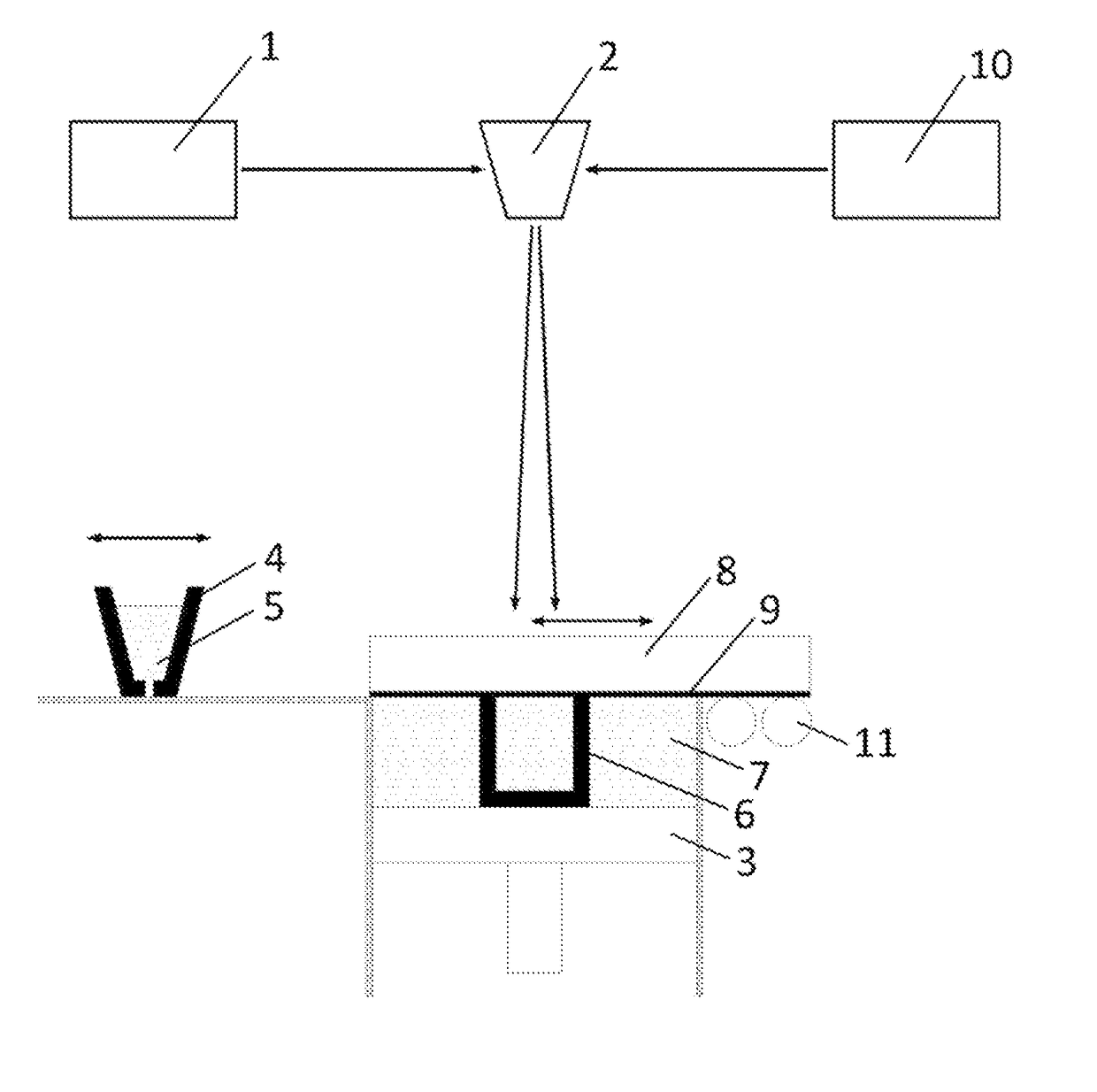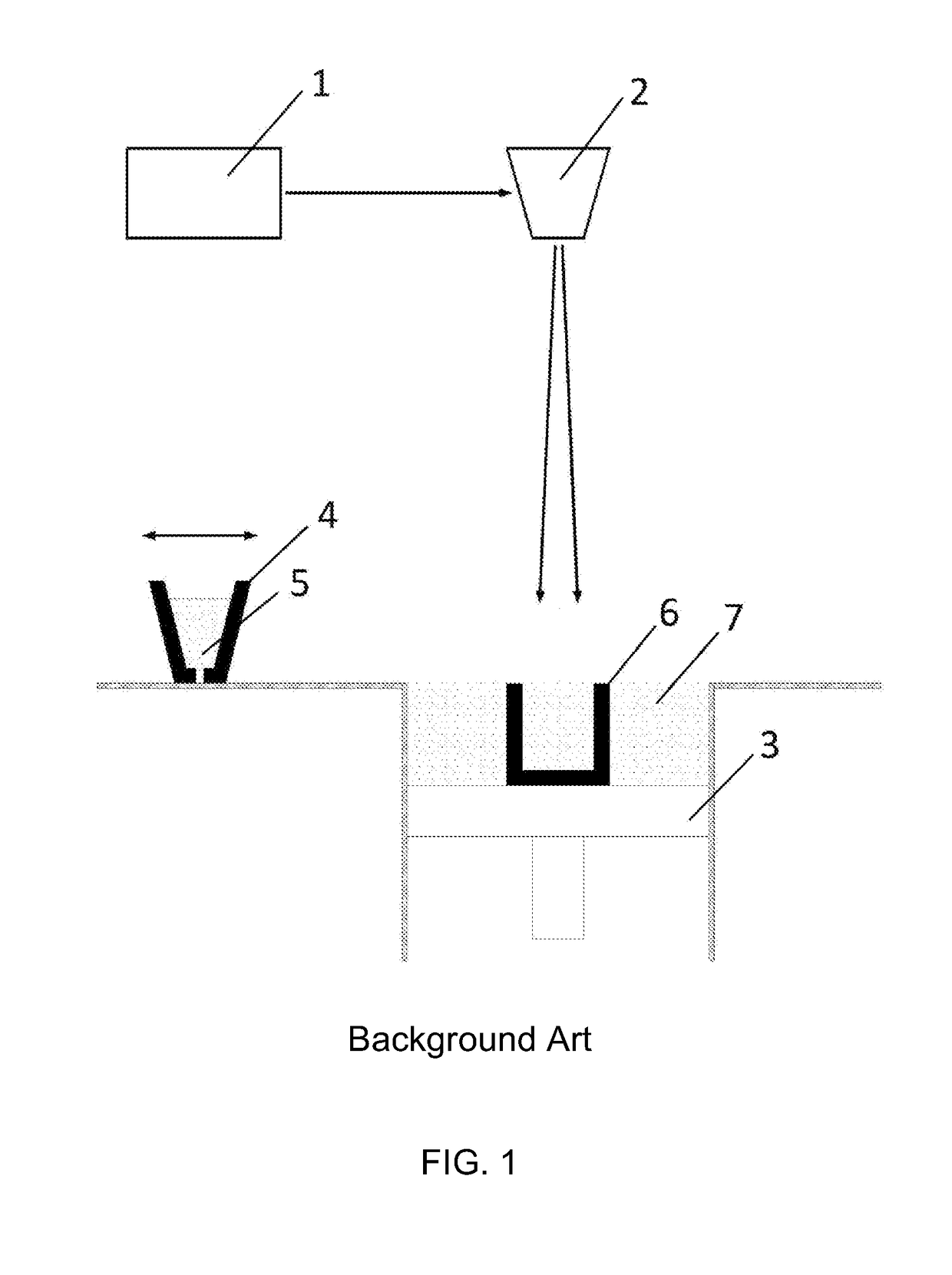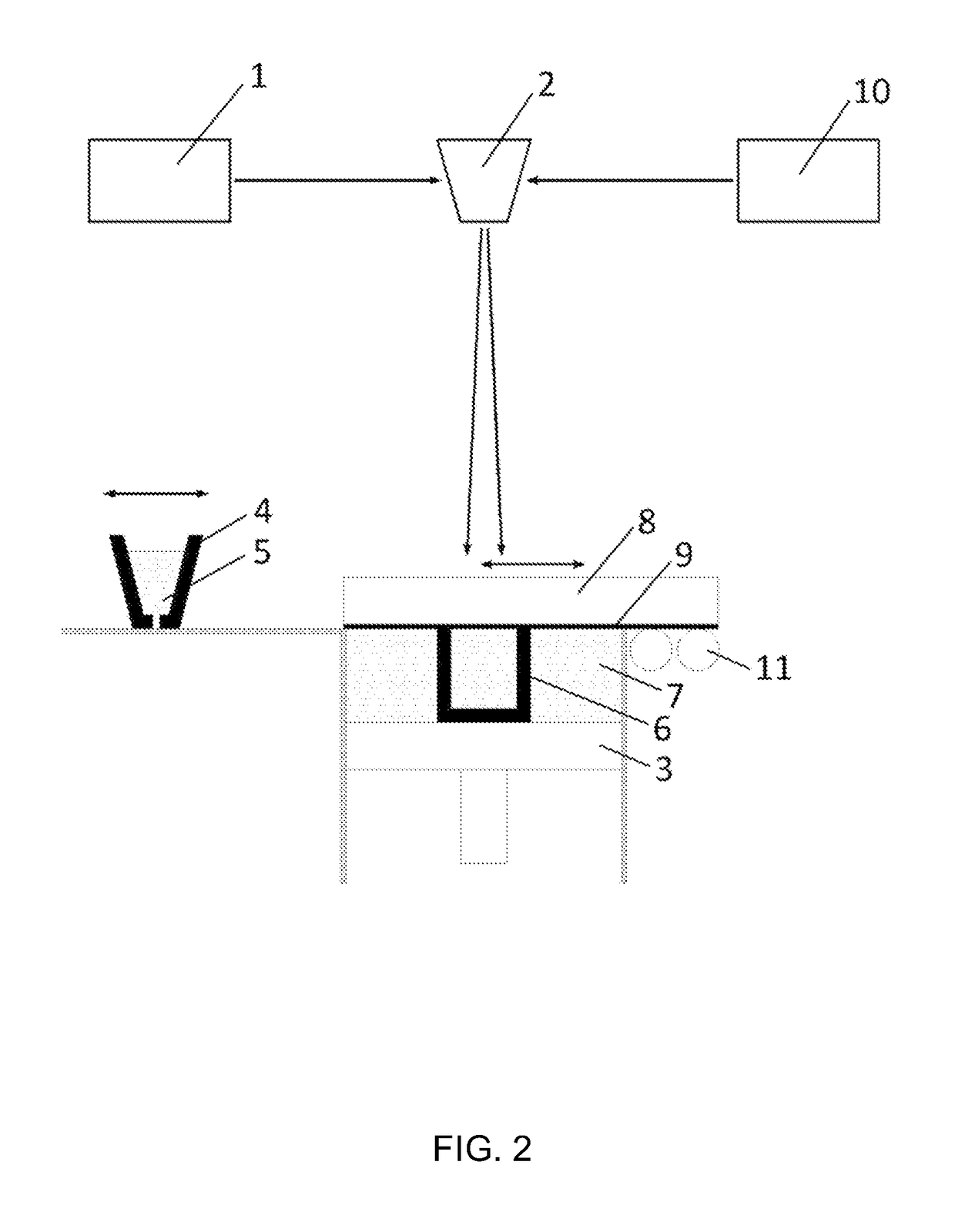Method and Device for Implementing Laser Shock Peening or Warm Laser Shock Peening During Selective Laser Melting
a laser melting and laser technology, applied in the field of methods and devices, can solve the problems of limited parts built by slm technology, inadequate mechanical properties compared to conventionally produced parts, increased surface roughness, etc., and achieves the effects of increasing the depth of shockwave penetration, increasing the shock wave pressure, and rapid expansion
- Summary
- Abstract
- Description
- Claims
- Application Information
AI Technical Summary
Benefits of technology
Problems solved by technology
Method used
Image
Examples
Embodiment Construction
[0031]A first idea of the present invention is to provide a device and a method for introducing Laser shock Peening (LSP) or Warm Laser Shock Peening (WLSP) during Selective Laser Melting (SLM) in order to change the residual stress field from a detrimental tensile residual stress (TRS) which is inherited from the SLM process, to a beneficial compressive residual stress (CRS) field in chosen critical zones, for example in the near surface region. This is resulting in improved mechanical properties and fatigue life of the part or article 6 (in situ) directly while it is being built and eliminates or at least reduces the need for post processing.
[0032]This approach leads to improvements of mechanical properties of the finished part 6 in much larger depths than with conventional post processing techniques. This effect is due to the use of LSP or WLSP throughout the volume of the part 6 while it is being built, instead of just as a surface treatment of a finished part 6. With such an ap...
PUM
| Property | Measurement | Unit |
|---|---|---|
| temperature | aaaaa | aaaaa |
| temperatures | aaaaa | aaaaa |
| residual stress | aaaaa | aaaaa |
Abstract
Description
Claims
Application Information
 Login to View More
Login to View More - R&D
- Intellectual Property
- Life Sciences
- Materials
- Tech Scout
- Unparalleled Data Quality
- Higher Quality Content
- 60% Fewer Hallucinations
Browse by: Latest US Patents, China's latest patents, Technical Efficacy Thesaurus, Application Domain, Technology Topic, Popular Technical Reports.
© 2025 PatSnap. All rights reserved.Legal|Privacy policy|Modern Slavery Act Transparency Statement|Sitemap|About US| Contact US: help@patsnap.com



